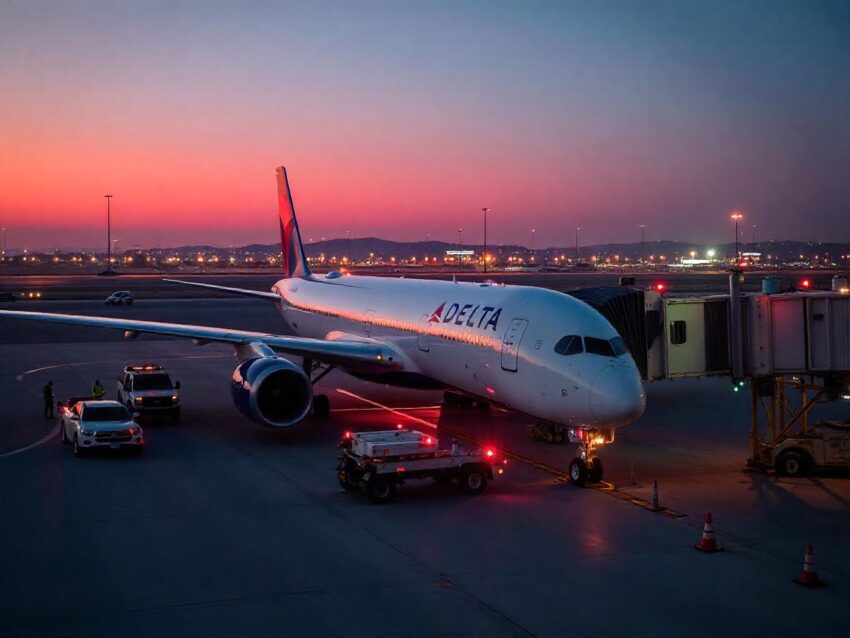- by foxnews
- 02 Jun 2025
US Based Airlines Delta Flight DL275 Detroit to Tokyo Flight Diverts to Los Angeles After Airbus A350 Engine Issue, Raising Questions About Long-Haul Safety Protocols, What You Need To Know
A routine trans-Pacific journey turned into an unexpected mid-air drama as US based airlines Delta Flight DL275 from Detroit to Tokyo was forced to divert to Los Angeles due to an Airbus A350 engine issue. The aircraft, hailed for its advanced technology, encountered trouble with its anti-ice system mid-flight—raising urgent questions about long-haul safety protocols.
- by travelandtourworld
- 30 May 2025
- in travel

In a tense moment that reminded passengers of the critical nature of aviation safety, Delta Air Lines flight DL275 from Detroit to Tokyo made a sudden mid-air diversion to Los Angeles International Airport (LAX) on May 28, 2025. The reason: a technical malfunction involving the anti-ice system of one of the Rolls-Royce Trent XWB engines powering the Airbus A350.
The flight, designated DL275, was on a routine trans-Pacific journey from Detroit Metropolitan Wayne County Airport (DTW) to Tokyo Haneda (HND). But what was expected to be a smooth long-haul became a day of uncertainty. For passengers, the atmosphere shifted quickly from calm to concerned.
As a precautionary measure, the aircraft safely landed on Runway 06R at LAX approximately 5.5 hours after the diversion call. Ground teams immediately conducted diagnostics, and Delta later confirmed the cancellation of the remainder of the flight.
Passengers were rebooked on alternate flights to Tokyo Haneda, and Delta worked quickly to assist affected travelers. Thankfully, no injuries were reported.
However, the incident adds to a growing list of recent in-flight diversions involving Delta aircraft. On the same day, two additional Delta flights in the United States also made emergency landings:
These incidents, though unrelated, raise broader industry questions about maintenance procedures, emergency decision-making, and airline readiness in managing high-stakes in-flight anomalies.
For Delta, the response to the DL275 incident reflects a well-coordinated safety-first approach. By choosing LAX, crews had access to robust ground support, certified technicians, and the tools necessary to diagnose and resolve the issue promptly.
The event also highlights the challenges facing airlines operating long-haul international routes. With routes often stretching over uninhabited regions and oceans, crews must make real-time calls that prioritize safety while minimizing inconvenience.
Moreover, for passengers flying these extended routes, such diversions are a powerful reminder of the complexities behind global aviation. What appears as a simple reroute involves complex logistics: securing new bookings, arranging accommodations, and ensuring all compliance standards are met.
The incident is unlikely to dampen demand for Delta's popular trans-Pacific service, especially as summer travel intensifies. However, it underscores the importance of proactive maintenance and transparent communication in preserving brand trust.
For the aviation industry, especially operators of next-gen aircraft like the A350, the takeaway is clear: even with the most advanced technology, systems must be closely monitored and backup plans must be swift and adaptable.
As travel ramps up in 2025, airlines will need to double down on in-flight monitoring technologies, crew training, and maintenance forecasting. The DL275 incident may have ended safely, but its lessons will resonate across the skies.
- by foxnews
- descember 09, 2016
History buff uncovers lost medieval monastery thanks to strange map symbol
Swedish archaeologists uncovered medieval monastery ruins in Derome, thanks to a history enthusiast's research of old maps and advanced radar technology.
read more




